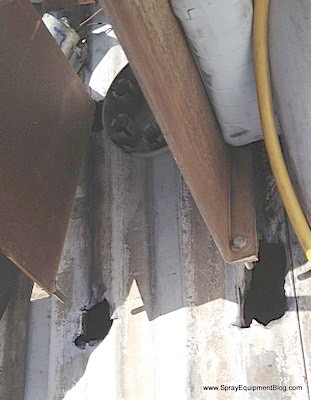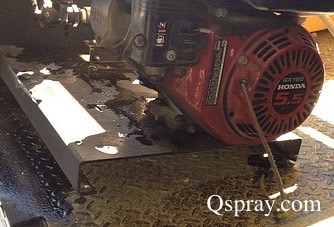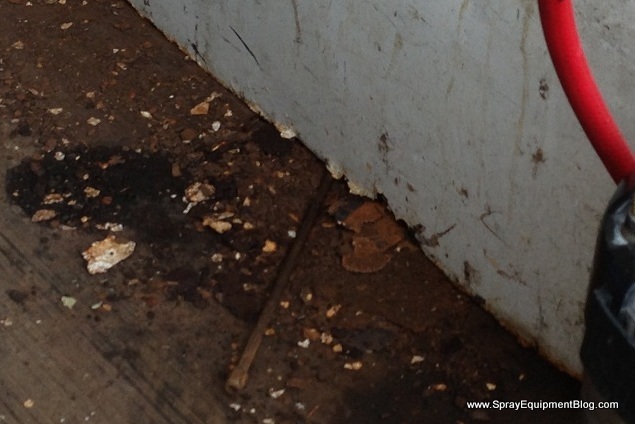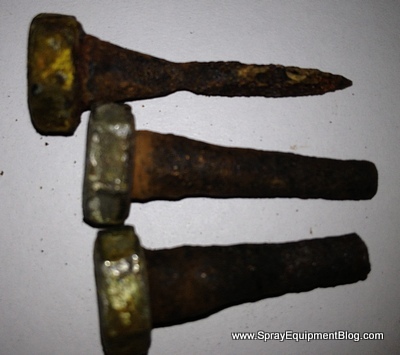Pest Control Equipment - Is it Attached? Part 1
Posted by Andrew Greess on Sep 29, 2017
Pest control equipment load security is a critical safety issue. Equipment that is not secure poses a risk to the driver – flying equipment could injure the driver or interfere with his/her ability to control the vehicle.
Other people on the road – equipment flying out of a vehicle going 60 miles an hour will do damage if it hits someone or something. Lawsuit anyone?
Loose equipment causes damage to the equipment itself or other equipment on the vehicle. Our equipment repair shop sees lots of completely avoidable problems caused by unsecured equipment. There are better ways to spend your money. We have shared some photos of pest control equipment we have seen in our repair shop that we believe posed a risk to driver, company and the public.

Here are some key points to keep in mind:
1. Just because it is in the truck, you can’t assume it is secure.
2. Just because it was secured five years ago when you installed it, doesn’t mean it is secure today.
3. Equipment that is secure under normal driving conditions at 25 miles, many not be secure in an emergency, such as:
- Collisions
- Hard stops
- Evasive maneuvers to avoid accidents
4. Technicians should check their load BEFORE starting their route. A minute or two spent this way can prevent the problems described above.
5. Small equipment (backpack sprayers, line trimmers, etc.) should be checked by the technician every stop to ensure it is secure. For examples see the landscape equipment safety
6. Small equipment should be placed in security racks or otherwise secured. We don’t recommend bungee cords but they are better than nothing. Just cramming stuff together is not securing it.
7. Large equipment (power spray rigs, toolboxes, etc.) should be checked periodically. The following photo shows a pest control sprayer motor mount (pump & motor assembly) that was not attached very well. The bolts on one side of the assembly were gone and the remaining bolts were very loose. Will this hold in an accident? Lawsuit anyone?

Examples:
Tool Box – Tool boxes are usually bolted through the bottom of the tool box to the truck. Inspect for rust, fatigue, or other wear around the bolts. If the material around the bolts is weak, in the event of a crash, the box may break loose.
The following photo shows this well. Bottom of toolbox is rusted. They may be secure under normal driving conditions, but in an accident, WILL IT HOLD?

Spray Rig – Is your pest control sprayer securely bolted to the truck? Are bolts intact and nuts tight? Is the correct fastening system being used? For example: stainless steel bolts won’t corrode and nylock nuts won’t vibrate loose. The following photo shows the bolts that were securing a pest control power sprayer to the truck. They were so rusted, there were no nuts and the bolts weren't really securing anything.

Spray Tank - Are tank straps snug and secure, or loose and worn?
8. Checking small pest equipment should be the tech’s daily responsibility. Checking large equipment should be the company’s responsibility. Use a regular schedule. For example, check the large equipment during the regularly scheduled vehicle oil changes.
9. Supervisors should spot check vehicles to ensure employees are securing their equipment.
We never expect problems to occur, but they do. Be prepared. Conduct these pest control safety inspections periodically to ensure you and your employees are being as safe as possible to protect your business.
To read the next article in this series on Spray Equipment Safety, CLICK.

